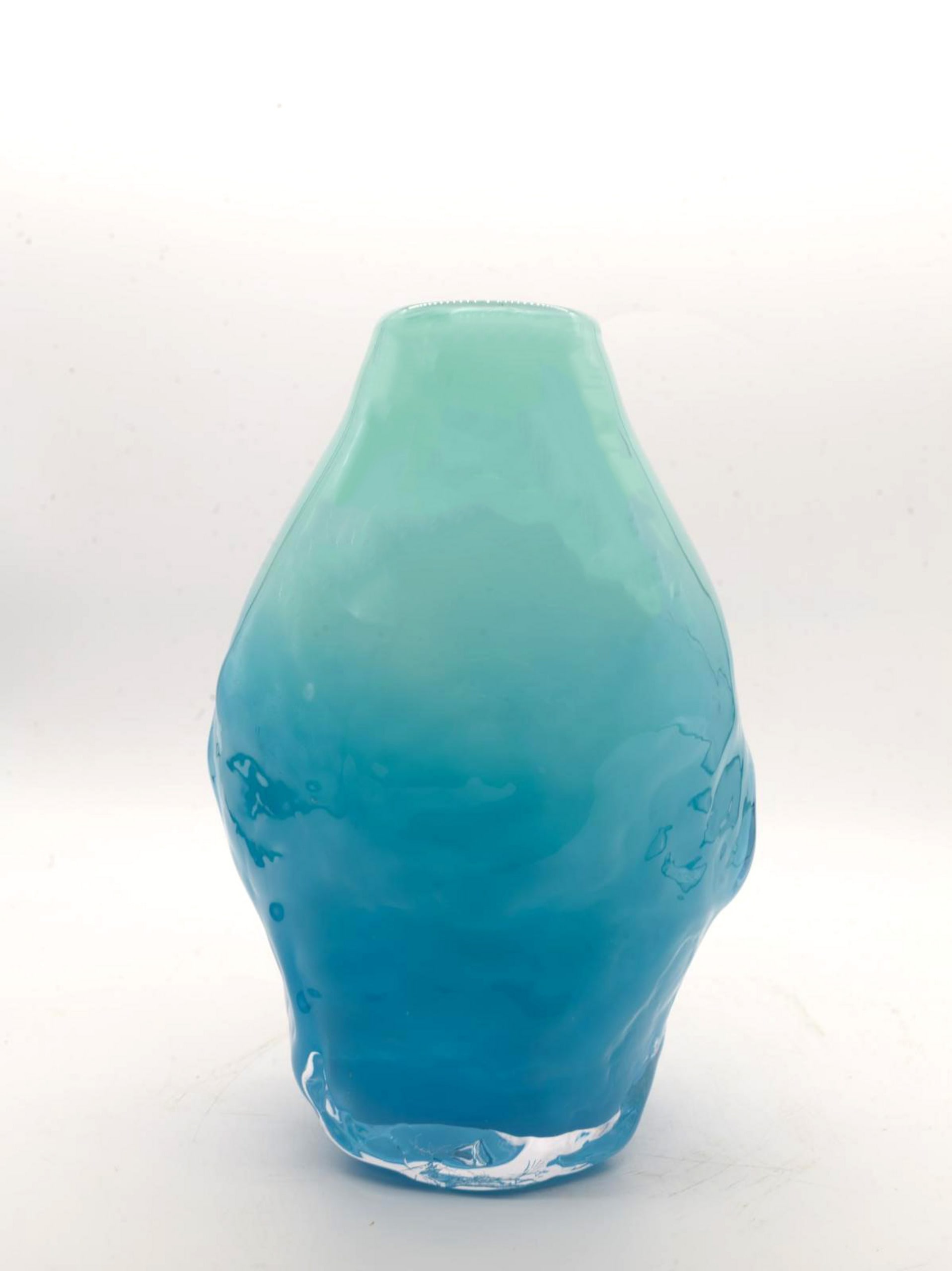Artist’s statement
A conceptual material practice. Finding my way to glass from a fine art background, I’ve crossed many fields of thought and creative practice. It felt like natural growth as I moved through materials I felt conceptually appropriate for pieces, whereas with glass I find a stronger material-led investigation which I've built my new platform on.
How do we use and view glass in society, and how does our collective history with the material shape our interactions? I try to use its intrinsic qualities of the material, its clearness, its weight, the production methods, to interact with subjects of nationality, community, mental health and more. With each piece I find a conceptual use for the material that speaks to the subjects I'm involved with. As humans we already have a familiar interaction with vessels, how can this familiarity become a contemporary platform for conversation?
What’s the difference between a passive and an active audience? Performance has been a new and challenging platform that I’ve entered, something I felt was necessary when considering my conception of social engagement and the interaction of art. Using ideas of active and passive audiences from Jacques Rancière’s The Emancipated Spectator, interwoven with the history of how glass vessels are used in society, I have developed a platform of catalysing objects that are part of a greater experience.
Can a vessel become a catalyst for conversations orientated around socio-political subjects? These catalytic objects offer an ultimatum to interact to the audience. Humour and familiarity create a safe space to engage with more difficult subjects: I wanted to reflect this aspect with the objects. Many people have been involved with the communal drinking vessel ‘Reclamations’ project as well as the kissing vessels in the year-long ‘Intimacy22’ which culminated in a live performance for a New Year’s Eve 2022 party. My work engages audiences with subjects of nationality, empathy and social connection, often reflecting contemporary social phenomena. Objects, video, photography, and texts are curated into films, and books document these events.
Adventures in design. Moving into design has been liberating and has fulfilled my need to make. As my art practice creates thoughtful works through a slow process, I find joy in having reactions to places and times I've been in. My design practice has become very emotive, through finding influence in organic forms and natural chaos as well as concepts of sensory perception and interactions of colour translated from my existing drawing and painting practice. My ‘Mountain Tumbler’ drinking glasses are produced by master craftspeople at the Novotny Glass factory in the Czech Republic, and I make my ‘Terrain Vessels’ and ‘Stingray’ lighting in the UK.
The next move. Now I refine the platform I have developed over my MA to challenge and examine subjects of culture and mental health; subjects close to my experience. I delve into the motive of showing care in the destruction of something with my experiences of Iran through nationality and family culture becoming a vehicle to discuss this deeper topic. I use performative aspects, material qualities and production techniques to demonstrate care in the destruction of something, and the outcome of a destruction if it is cared for or not.















